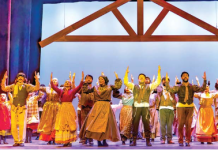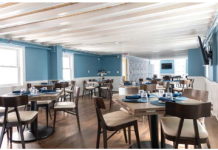By Linda McK.Stewart
There’s our time and there’s African time.
We measure time by clocks and calendars, by watches with second hands and sell-by dates. Elsewhere, time may be measured by moon and stars, by drought and war. And sometimes not measured at all.
In the southeast corner of Zimbabwe, where the Great Ruins stand baking under the equatorial sun, the expression “time stood still” is as literal as it is poetic.
Great Zimbabwe dates back to about 1000 A.D. when the Shona-speaking people of Zimbabwe developed a prosperous society that endured for 300 years. It extended for nearly 1,800 acres. Without mortar, they constructed an extensive complex of stone dwellings. So precise were their stonecutting methods that much of their massive granite walls still stand, rock solid today. The kingdom prospered under a succession of kings. Commerce thrived between the Shonas and Arab traders dealing in gold, copper, iron and tin. It was a highly stratified society supported by some 2,000 people. From1000 – 1300 A.D. the Kingdom of Zimbabwe was sub-Sahara’s most highly developed civilization, its remains now, designated by UNESCO, as a World Heritage Site.
My trip to the ruins began with a vintage Piper Cub flight from Harare down to the sleepy town of Masvingo. Once a hive of bustling farmers and tradesmen, today, 30 years into absolute rule by Robert Mugabe, the local mines are closed, tobacco and sugar plantations are overgrown and farm machinery rusts by the roadside. At the airstrip I met my guide/driver Adashe, which translated from Shona means he Loves God. Adashe was tall, full of smiles and certainly his English topped my Shona so we shook hands and took off, trusting everything to his 1960-something Land Rover. Though the road to the ruins is best described as dubious, we arrived in less than three hours, parched, dusty but still intact.
Tourism has yet to smother the ruins so no ranks of oversize buses. No visitors’ center. No souvenir stands. The ruins are composed of three distinct sections: the Valley Ruins, the Great Enclosure and the Hill Ruin. With sturdy shoes, bug spray, sunblock and determination, it’s possible to explore it all between sunup and sundown.
The Valley consists of remnants of roofless stone huts scattered across a vast savannah where only an occasional baobab tree offered a modicum of shade. Closer at hand was the Great Enclosure, a large area partially enclosed within an elliptical stonewall, crumbled in places to ground level but standing at least 30 feet high in others. Time was when a sizeable palace stood there.
Wielding a very efficient machete, Adashe led the way into the center of the enclosure where a massive stone tower loomed high overhead. Stepping over big rocks
and through prickly underbrush, we circled it. No doorway, no steps, no way of entering it or climbing it. Was it hollow or solid stone? Did it, like the pyramids, contain at its core some religious relic? It stumps archaeologists around the world but it doesn’t stump Adashe. It’s solid stone, he told me; built in tribute to the Shona God Mwari. Mwari is both male and female and is still venerated by an ever-dwindling flock of Shona and Ndebeles, Zimbabwe’s main tribes.
Under a clump of mopane trees we sat on boulders to eat a picnic of mystery meat and hot peppers wrapped in slabs of bread, washed down with bottles of reddish “spring water.” Doubtful but delicious.
Early afternoon and the sun was slipping sideways in the sky as we started up the third section of the ruins called the Hill. A steep path threaded ever upward, winding in and around huge outcroppings of granite. It was a climb atop a boulder, reach up to the next boulder and haul yourself up. I was not happy blindly placing my hands on the overhead surfaces. Between huffs and puffs, I asked Adashe, “What about snakes?”
“Oooo, not to worry, Mama … This holy ground,” and he swooped his arm to embrace the hilltop above us and the valley with its scattered huts, its massive wall and mysterious tower way below. But once at the summit the view more than compensated for the hot and sweaty effort.
From way up here, Adashe explained, sentries could easily spot invaders and sound the alarm. So what brought it all to an end some time in 1300? Was it plague, drought, invasion? Who knows? In this remote corner of Zimbabwe the most highly developed community in all of sub-Sahara Africa flourished for 300 years. But since then, only vine-strangled ruins with nary a sign of human activity. Time at a standstill.
Footsore and sunbaked, we made it back to the jeep. There an old man waited, presiding over an assortment of homemade souvenirs … wooden zebra, giraffes made of twigs and his prime offering… the dried skin of a 5-foot, brown mottled puff adder, one of the world’s most venomous snakes. Caught just yesterday he said proudly. “Caught where?” I asked. “Up there, Mama,” he said, pointing to the hill we’d just departed. “Many, many… all day. Sleeping in the sun on the rocks.”
As we jeeped back, Adashe and I, I thought but didn’t say, well so much for “holy ground!”
IF YOU GO: For additional information: www.zimbabwe tourism.net.














